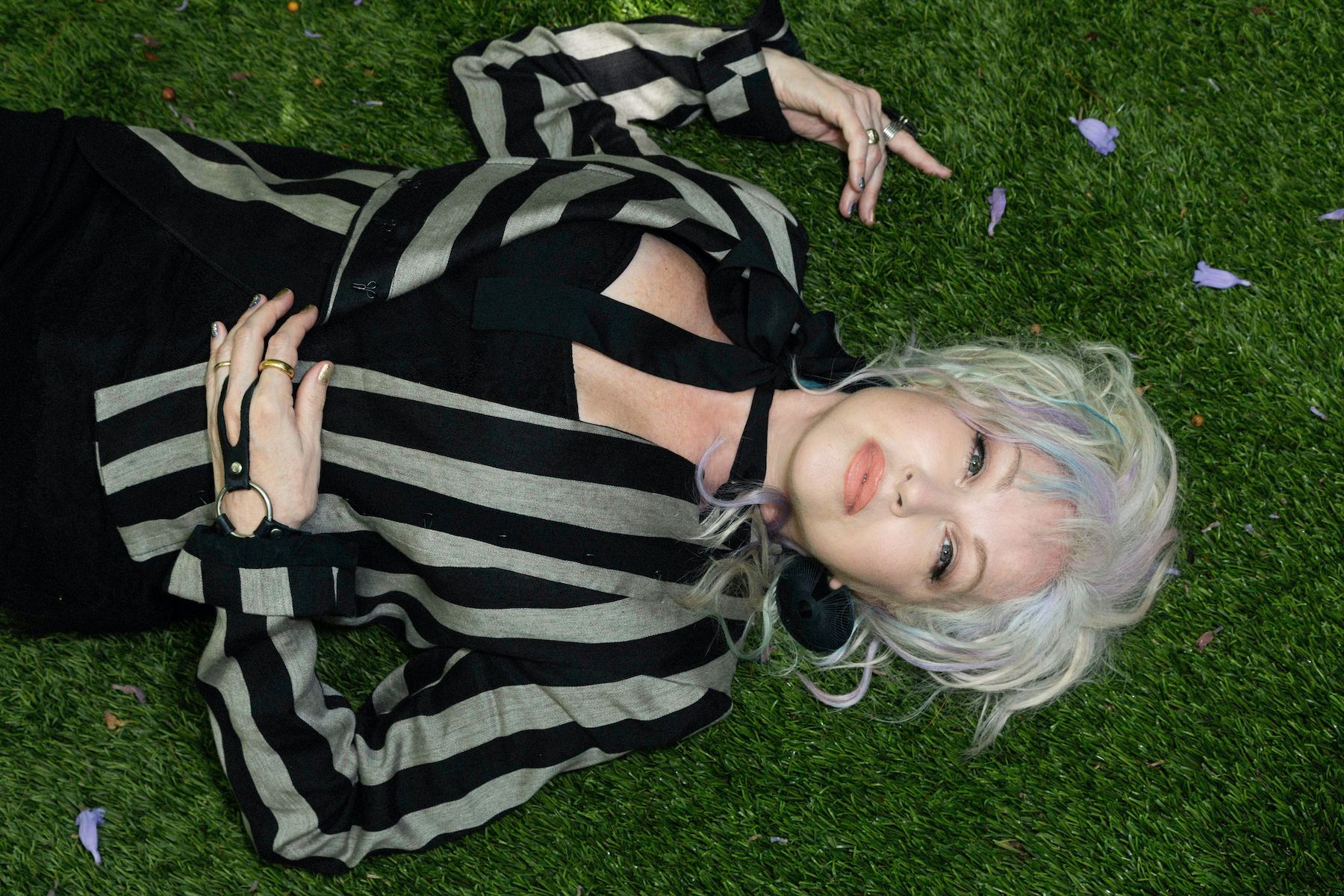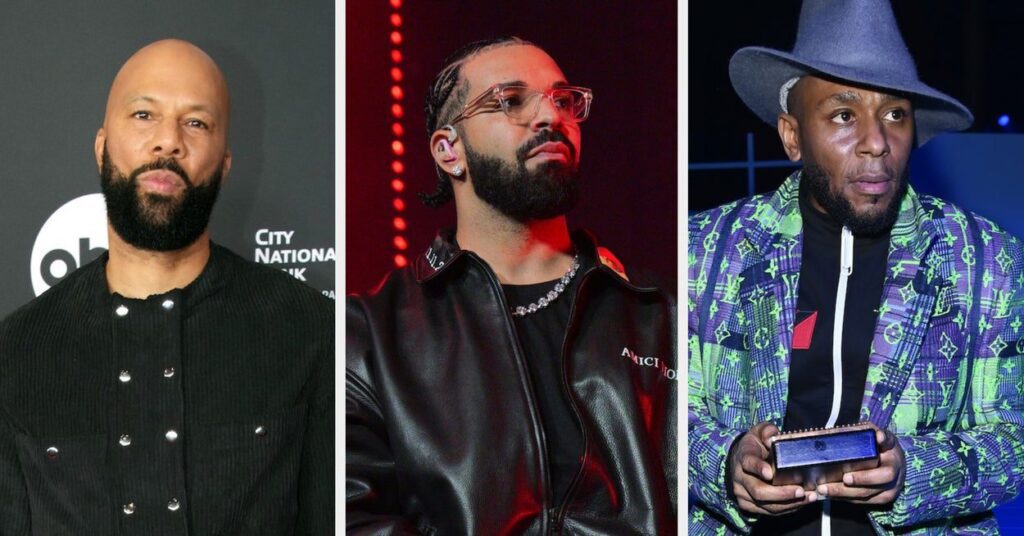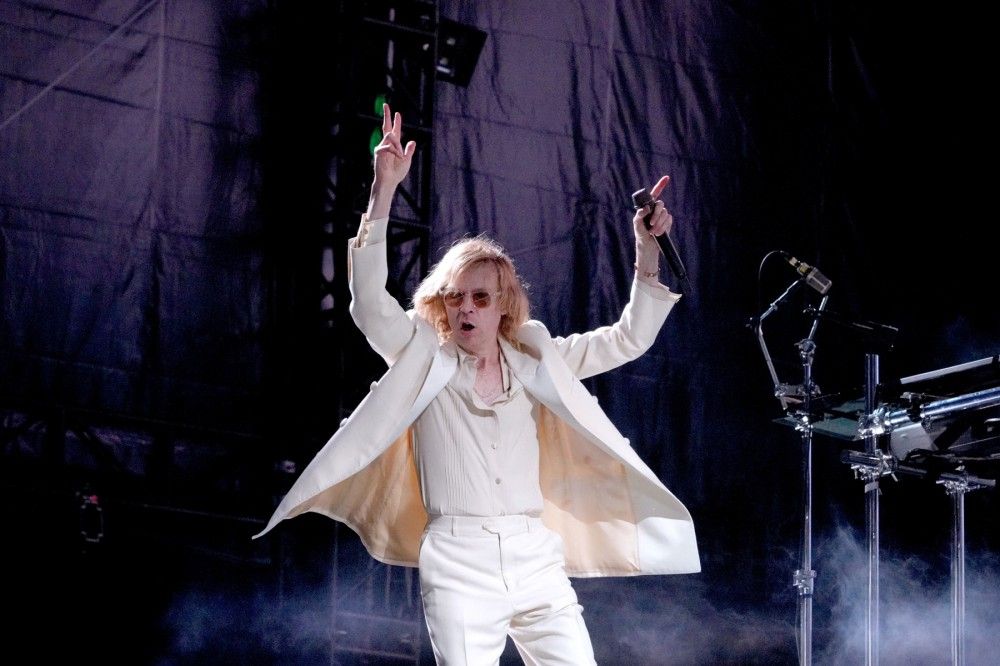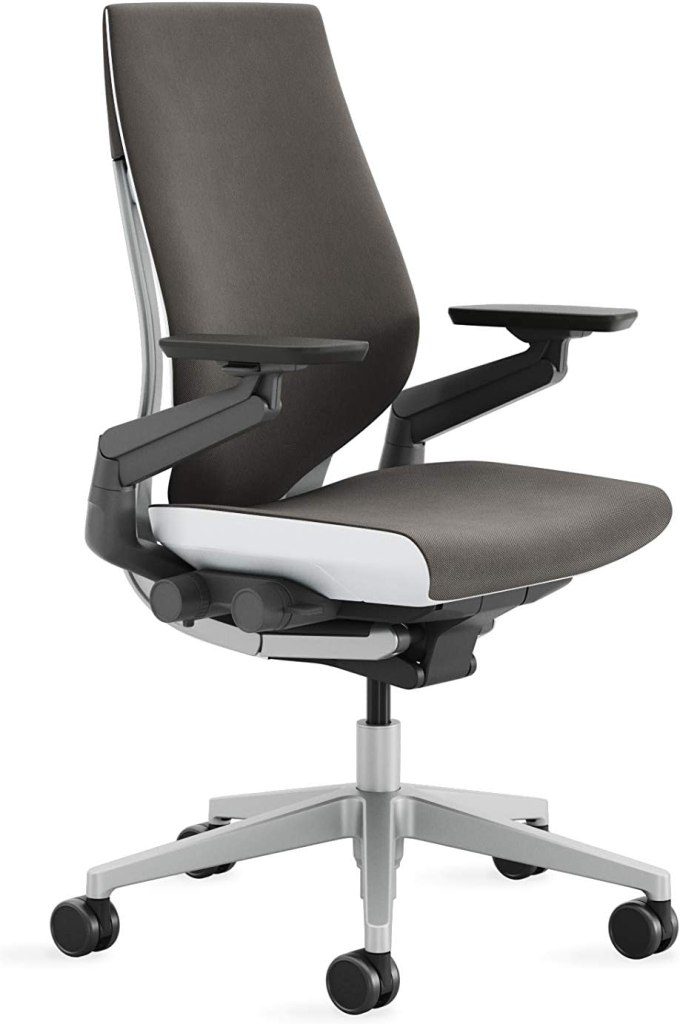
Cyndi Lauper on 35 Years of ‘True Colors,’ Pride Anthems, and the Next Crop of Innovators
Cyndi Lauper is celebrating the 35th anniversary of her iconic sophomore album, True Colors, which came out on October 14th, 1986. And to mark the occasion, she’s dropping a new expanded digital version at midnight Friday, featuring two bonus tracks: Junior Vasquez’s remix of the title track, a Number One single in 1986, and its long-lost B-side, “Heading for the Moon,” which never made it to streaming services until now. She’s also sharing her own custom “True Colors” Instagram filter.
Lauper might be taking the world by surprise with this news, but that’s her specialty. She made one of the Eighties’ most beloved albums with her debut, She’s So Unusual — an arty New Wave goof that somehow blew up into a monster pop mega-hit. She ruled MTV with “Girls Just Want to Have Fun,” “Time After Time,” and “Money Changes Everything,” becoming an instant hero to weird-haircut kids everywhere. The media adored her flamboyant humor, her fashion quirks, her stable of pro-wrestler friends. And the hits kept coming, from “She Bop” — one of the filthiest masturbation anthems ever to crash the Top Ten — and her gender-twisting vamp on the Prince deep cut “When You Were Mine.” Cyndi was America’s purple-haired sweetheart.
By ’86, the whole world was waiting for her follow-up, True Colors, which dropped three years to the day after She’s So Unusual. But to everyone’s shock, it was a totally different album. Fans were taken aback by the downbeat, somber vibe. As Cyndi says now, it’s an album made in the shadow of the dreaded “sophomore jinx” from an artist struggling to cope with her overnight stardom. “It’s a very strange thing when you first become famous, because there is no How to Be Famous for Dummies book and you really do need that,” Lauper says. “People start freaking out. People won’t tell you the truth anymore. You become ‘Her.’ When you’re the female artist, you’re always ‘Her.’ ‘Look at Her.’ ‘Can you believe Her today?’ ‘What is She up to now?’ You’re always treated like the pain in the ass.”
True Colors‘ title track soon became a global queer-pride hymn, a song Lauper has done at countless LGBT benefits over the years. But it’s still an oft-misunderstood album. It has vocal cameos from Billy Joel, Aimee Mann, and the Bangles, plus prog guitar hero Adrian Belew on a very Eighties cover of Marvin Gaye’s “What’s Going On.”
As True Colors turns 35, Cyndi caught up with Rolling Stone for a long, wild chat about the album, her exquisitely bizarre career, why she relates to Prince, doing Shakespeare with wrestler buddies, making her mom an MTV star in her videos, and why she loves Olivia Rodrigo, Billie Eilish, and Taylor Swift. She talks exactly like she sings — brash, non-stop, rushing a thousand miles an hour, always a force of nature, always the girl having the most fun. Long may she bop.
What was it like recording a song as famous as “True Colors”?
That feels like yesterday. I remember the smell of the room. The Power Station in New York, in that big room. I just wanted to get it right — I wanted it to have a soul. Billy [Steinberg] and Tom [Kelly] wrote the song. I discovered it at my loft and kept listening to it, because I had just lost my friend from AIDS. My friend Gregory [Natal] had asked me to write a song for him, which I did. I wrote “Boy Blue.” But that one didn’t work out so well — it wasn’t a hit. Unfortunately, it turns out, pouring out your heart and your liver is not good for repetitive airplay.
But when I heard “True Colors,” I knew it was a really special song. I was living in Tribeca, in the Thread Building, with my new baby grand piano. I worked with this wonderful keyboard player who played on She’s So Unusual, Peter Wood. With “True Colors,” I thought, “It’s a great song, but it’s just not my style of music.” It sounded gospel-y and country, and it wasn’t what I could relate to at that moment. They wrote it for [Canadian country star] Anne Murray, and she turned it down. But Peter came over and we were going to arrange it. We said, “Maybe we could play our kind of chords, not full chords — more like open fifths.” I started singing softly and he started to play [the keyboard hook after the chorus]. When I heard our demo, I realized it had intimacy, and intimacy was the most important thing. Especially since we were really heartbroken when my friend died.
Sorry about your friend.
Hon, it was ’85 or ’86, but I miss him. Gregory was only 24 — he was a kid. And he wanted me to sing a song like “That’s What Friends Are For.” But that was written by Burt Bacharach. So I was like, “Holy cow, what the heck? I am NOT Burt Bacharach.”
On the first album, on the inner sleeve, I wrote the lyrics to “Time After Time” on a peeling wall. But this time, for “Boy Blue,” I wanted to write it on the sky as a letter to him. Like I said, it was not a hit, but “True Colors” was, and it was for me, and his partner who was left behind, and his friends who loved him, to comfort us.
When did you realize this song had turned into a queer standard?
It was one day at the NYC Gay Pride Parade, 1994 or 1995. I was with all the drag queens. My Seven Deadly Cyns album was coming up, and my friends who were drag performers in the video said, “We gotta get a float! We’re coming out, we need a float.” But that night when we got to the pier, I realized so many things — you can’t have these people just hail a cab around here. It isn’t safe, because of the gay bashers. That’s something I’d never thought about. Who knows whether this is true or not — because people say anything sometimes — but when I was doing soundcheck, somebody came up and handed me the rainbow flag. This guy told me he made it and I inspired him. I didn’t know if that was true. [Editor’s note: the artist Gilbert Baker designed the rainbow flag in the Seventies, long before the song existed.] But I do know one thing: I wrapped the flag around myself that evening and sang “True Colors” like I never sang it before, because I realized my friend Gregory got his wish, with a song that was embraced by everyone.
That song sounds so vulnerable.
I could relate because I was always that kid, floundering. I tried to work as a waitress at International House of Pancakes, until they said, “Honey, your mistakes cost more than your salary. How about hostessing?” Then I worked at Giftpacks and I couldn’t get the stuff in the bag. The boss would get on the megaphone and yell, “Lauper, wipe that smile off your face! What are you, some kinda comedian?” I never felt like a success, until I started to sing.
You made a classic debut with She’s So Unusual — such a bold feminist New Wave manifesto. How was it different making this album?
When I did True Colors, that was like starting all over, because I wasn’t with [producer] Rick [Chertoff]. I wasn’t writing with Rob [Hyman] and Eric [Bazilian]. I had to start again. So you try writing with other people, but you don’t always really connect. And that’s a problem. At one point, you’ve got to have some connection. When I did record “True Colors,” in that room, I kept singing until I felt that we were locked in and everybody could feel each other breathe. It’s about being intimate and making someone feel like you’re whispering in their ear.
Then we did Marvin Gaye’s “What’s Going On,” another wonderful song from one of the all-time greatest albums ever made by a pop musician. That and Stevie Wonder’s Songs in the Key of Life. I also had my friend Bonnie Raitt come with a tape of this woman out of Philly, Essra Mohawk, who had written “Change of Heart.” Bonnie said to me, “You made a man from Philly famous. Now it’s your turn to make a woman famous.” “Change of Heart” had Nile Rodgers on guitar — at that time, he was doing so many incredible things.
I was disappointed in myself as a writer at that time. I sang pretty good, though. And I did write “Boy Blue,” even if it’s not a hit.
After a hit like She’s So Unusual, you must have been feeling some serious pressure.
It was the sophomore jinx, right? I was worried about everything. It was my nightmare: “Oh my God, what if I wind up where I came from?” Because I was a runner. I was running away from Queens, from the mentality of my neighborhood, where I couldn’t figure out where a woman’s place was, but it wasn’t out in the world. It wasn’t with the same rights as men. So I’ve basically lived my life as a man. Except I’m very sentimental and loyal — but other than that, ya know?
But it was a tough time because I had to be loose and free and have lightning strike again, and not know how it was going to do that. With She’s So Unusual, the songs told a story, one that I could tell believably. And I wanted that first album to have this new sound that was on the street — this gated-snare sound, the electronic thing. My whole team, we worked so hard — we connected like we were a band. But then when I got to True Colors, the band was gone. Now I was really solo. For the life of me, it was going to be different, no matter what.
I also found myself writing about things that I would disguise. Because things started to fall apart for me in my personal life, and so I didn’t wanna be that girl that just wanted to have fun, ya know? So things were disguised. Like “The Faraway Nearby,” which was inspired by a Georgia O’Keefe painting. But I couldn’t really say how I felt. I wrote a song “A Part Hate” [about apartheid] but the record company said it couldn’t go on the record because all of a sudden it was too political. And I resigned myself. I said, “OK, fine.” But it finally did come out in 1993, on Hat Full of Stars.
That album is so underrated.
I finally took the gag off my mouth. I also worked with [songwriter] Allee Willis, on “Who Let in the Rain?” She was really talented, a little bossy and bombastic — I used to call her Sarge, because she’d always be, “Lauper, what are you doing?” I had a house in the Cape that flooded and I just went, “Who let in the rain — hey, that’s a song title.”
On True Colors, why did you need to disguise how you felt?
That period took me through the break-up of my manager [David Wolff] and myself. We were a couple. [He’s her co-star in videos like “Time After Time” and “She Bop.”] I was entangled — like, engaged. So when you break up, it’s not a good thing, because you can still try to work, but it gets weird. I actually interviewed managers. One manager just yelled at me — I knew that’s not going to work. Another guy said, “Well, what do you like to do best? Do you like to sing? Do you like to write, do you like to produce?” And I was thinking, “Why do I have to split myself up like that? Why can’t I just do what I do?”
Your Eighties music was more emotionally complex than many people realized. People heard the fun on the surface, but there was always emotion going on below.
Well, you’re a storyteller when you are a singer. You’re an athlete and you’re a storyteller. You’re an athlete because your body is your instrument. But when you sing a song, you’re telling a story, whether it’s your personal story or in the third person. So I only chose songs I would aspire to sing, like “All Through the Night,” which Jules Shear wrote. That song had its own thing — very Beatles. I loved the Beatles. I met them when I was nine.
You did?
I got an album that said, Meet the Beatles. I met them. I loved them. You see what I’m saying? And I met the Supremes, too, because they also had an album Meet the Supremes, so that’s how I met them. They were all my friends because I sang those songs all the time. We were buddies. And unfortunately for my Barbara Streisand days. She was still in there, with Funny Girl — I sang every single one of those songs. But I had new music that wasn’t my mom’s anymore.
Your whole career, you’ve mixed up all different styles of music. She’s So Unusual had reggae and punk and New Wave, also pop and disco and soul, on the same album.
But you see, when I was growing up, that was rock & roll. On the radio, the same station, you’d hear a Beatles song, then a Motown song. You’d hear a Joni Mitchell, you’d hear a Simon & Garfunkel, then a Nat King Cole. Sly and the Family Stone — are you kidding me? It was awesome. All this different music, on one station — even Patsy Cline. For me, what I love about music, all these cultures came to America and mixed. The drums from Africa. The folk Irish things. The zither from Germany.
And the more you travel, the more you hear. I went to Argentina in the Eighties and I got to hear tango Argentino. I learned all about Astor Piazzolla — I met his widow. You hear the relationship between the accordion and the violin — that in itself is a dance. I went to Memphis, one of the most extraordinary music towns in the world. That’s the basis of our country. In Tennessee, you have the two forms of music that created rock. You have the country, and you have the soul. I made Memphis Blues there — when you sing with Ann Peebles and B.B. King and Allen Toussaint, it’s like walking in heaven.
The way you crossed musical boundaries, you had so much in common with another Eighties rebel icon: Prince. You did a historic version of “When You Were Mine.”
He was a genius, on a different level. He could do it all. He played so many instruments — that’s not my gift at all. Purple Rain surpassed all expectations. Just genius.
I’m not sure how he reacted to being that famous. You can fight your way to make your ideas heard, but when you actually get there, it’s terrifying. Because all of a sudden, you’re not anonymous. You’re not going to surprise anybody because they already heard you. And now they have these expectations, spoken or unspoken. Always in my life as an artist, before ProTools, there was always this dangling carrot: “You wanna make a record? You wanna make a record?” All you wanna do is record your work. So you find yourself doing all this stuff just so you can make a record. It’s always a negotiation.
You might have been the first female singer to redefine a Prince song.
I thought the way he wrote was so brilliant because he talked about things like, “You didn’t have the decency to change the sheets!” He talked about everyday life, which is really interesting because as an artist you’re supposed to record what life is like right here, right now. There’s a kind of poetry that captures what it’s like to live in this moment. It’s sonic Impressionism. And that’s what I think every album should be like. My dream of She’s So Unusual was to take a sonic picture of what life was like then, so that’s what I tried to do.
Also in the videos, especially “Girls Just Want to Have Fun.” I wanted it to look like New York, New York. We are blessed to have a quilt of different people. I wanted every little girl, no matter what color, no matter what ethnic background, to be able to see herself. And hopefully, get the idea that she too can have a joyous experience in life. And the fact that my mother was in it made it even better because we spoke from two generations. My mom was so sweet. She was in all my videos.
No other rock stars had the chutzpah to put their moms on MTV. You made her a star.
She was always adventurous. She used to play music all the time, sit us down on her bed by the stereo. She played Peter and the Wolf conducted by Leonard Bernstein. She played us speeches by Robert Kennedy and Dr. King. There was so much racism around our neighborhood. You’d go to the beach in Rockaway and you’d hear people listening to Black music on their radio, but if a real Black person put a blanket next to them, they’d have a fit. And all I kept thinking is “What’s blaring on your radio? Aren’t you listening?” That’s when I realized, “I’m with the crazy people here, and I gotta just bite it until I get the hell out of here.” And that’s what I did. I ran as soon as I could. I ran. But unfortunately, I just ran to Long Island! I don’t know what I was thinking.
My mom was such a good sport. There was something about her on film — so fragile and great, so regular. A real actress would have never been that. Mom was only there to spend time with me, to be part of it. So how lucky am I? Now she’s with my brother in Florida, but I don’t get a chance to go there. I don’t wanna bring germs.
It’s a tough time.
I’m hoping this Covid thing goes away, but who knows? But yeah, she was always part of it. When we did the video for “True Colors,” she was in the rowboat. The director was Pat Birch, who worked on Saturday Night Live. But I never made it to SNL ever. They invited me once with the wrestlers, but my manager said, “They’re not writing so good. It might be a real fiasco.” But in my heart of hearts, I always wanted a skit of the wrestlers and me doing a Shakespeare scene. Captain Lou Albano doing Shakespeare, right? Looking at the skull yelling, “To be or not to be!”
I gotta say, making that True Colors album was a creative experience. I got to do visual things that were extraordinary. I got to do my album cover with Annie Leibowitz, again after She’s So Unusual. Annie showed me all the French films, like Jean Cocteau’s Orpheus. Because the cover of True Colors is from Orpheus, right? You can’t miss it. My voice was really strong then — I even sang upside-down sometimes. There was a ladder up the wall and I used to hang on, flip upside down, and sing. That’s hard to do, unless your neck is just loose.
All these years, nobody knew you sang upside down?
Hey, I never stood up the right way, even when I was in cover bands. I got in trouble for moving around too much. They said I moved like a boy. I tried to stand still and sing, but I couldn’t — I always had these giant platforms on. That was the beginning of my athletic journey. I was Rocky — I put the egg in the mixer, drank the egg, tried to run, but I didn’t really start to work out until 1985. My mom came in every week to work out with me. It was kinda fun watching my mom try to do a push-up.
Do you still listen to the music that inspired you back then?
I always think the Beatles were really great. Some of these songs, in my darkest moments, I’d keep singing like there was a chance they could make me feel better.
When my kid was four, he loved to sing “The Long and Winding Road” when I was driving. He’d be in the back in his car seat, singing his heart out. “Many times I’ve been aloooone!” And I look at him like, “When the hell are you ever alone? Daddy’s always with you. And then I’m with you when I’m not working!” I had to hide the Green Day record from him — it had curse words. So I go on tour, I come back, he’s playing the Green Day, singing the F-bomb as much as he can. “Just part of the song, Mom!”
But music is a wonderful gift that connects us together. This Covid thing has been tough, but I had a great summer. I did a lot of writing for this Broadway show, Working Girl, and hopefully, everything’s going to keep on track for that.
Are there younger artists that you’re into?
I love Olivia Rodrigo. Some of her music sounds like Billie, Billie Eilish. But then it goes pop, then she raps, then it’s a punk song. I love that. Taylor Swift, she’s so prolific. That last Covid record — come ON! It was incredible, right? She’s always been a wonderful writer, but that album was poetry, and that girl actually does write poetry. The only thing I don’t like about new music — when I listen to what the top new music is, there’s a lot of men, not a lot of women. But so many great musicians out there now. It’s a good time to be listening. I’m always listening, always learning.




